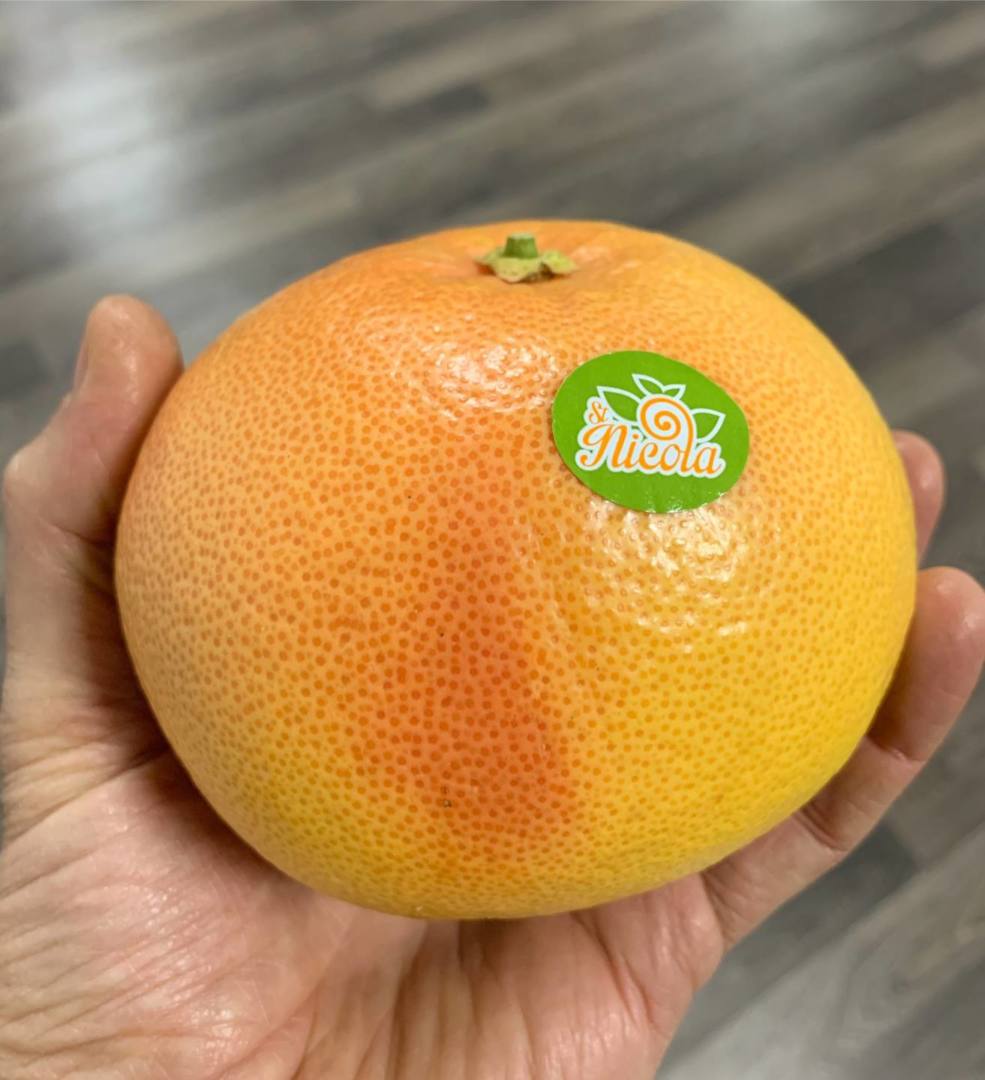By Emily Laurence.
I used to have a boss who would walk around the office and hand out oranges to everyone as he walked to his desk. On the surface, it seems like a nice gesture, but I always had the sneaking suspicion he only did it so no one had an excuse to use a sick day. After all, oranges are packed with vitamin C. But you know what would have worked even better to keep us all healthy? Grapefruit. It turns out they’re more nutrient-dense than their smaller, orange cousin.
Right now we’re still in grapefruit season (which lasts until May or June) making it the perfect time to stock up. And if you’re looking for a reason to do so, how about seven? Keep reading for the nutritional low-down on why having grapefruit at breakfast is so beneficial, plus some ideas on how to enjoy it.

What are the health benefits of grapefruit?
- It’s great for your immune system. Exhibit A of all that glorious nutrient density: grapefruits are a good source of vitamins A, C, and E—a trifecta that works together to keep the immune system up. (Specifically, one whole grapefruit has 77 mg of vitamin C—more than what you’d get in a large orange.) So you know those times of the year when everyone in your office seems to be sick? (Um, like right now?) It’s the perfect time for some grapefruit.
- Eating grapefruit regularly is linked to higher nutrient consumption. One study found that women who ate grapefruit had a higher intakes of vitamin C, magnesium, potassium, dietary fiber, and improved diet quality. “Grapefruit may provide a healthful option for adults striving to meet fruit recommendations,” the study concludes. However, they weren’t only eating grapefruit, so it’s hard to tell how much the grapefruit made an impact on those overall levels. But the association itself is certainly promising.
- It could help prevent diabetes. There’s evidence that eating grapefruit—which is moderate on the glycemic index scale—can help keep insulin levels even, protecting against type 2 diabetes. “Greater consumption of blueberries, grapes, apples, bananas, and grapefruit were significantly associated with a reduced risk of type 2 diabetes,” reads one large 2013 study. “Our findings suggest that there is significant heterogeneity in the associations between individual fruits and risk of type 2 diabetes.”
- It could help keep fat from building up in artery walls. There’s evidence—at least in mice—showing that naringin (a flavonoid in grapefruit) can help prevent atherosclerosis, when plaque and cholesterol build up in your arteries. Again, this is just a mouse study, but grapefruit certainly could be worth adding to a heart-healthy lifestyle.
- It’s high in antioxidants. Grapefruit is also a good source of antioxidants, which help reduce inflammation and fight damage caused by free radicals in the body. Even grapefruit peels are high in antioxidants, so don’t just enjoy the refreshing, vibrant meat and juice of the fruit; use the peels as zest in various dishes, such as poultry or in baked goods.
- It keeps you hydrated. Grapefruits are 88 percent water (one whole fruit has 216 grams of the stuff!) making them a pretty stellar way to stay hydrated in addition to your regular S’well bottle habit. While grapefruit juice is a popular breakfast beverage, it’s more beneficial to the body to eat the fruit so you’re also getting fiber.
- Grapefruits help keep bones strong. Grapefruit contains decent amounts of calcium and phosphorus, which both help keep bones and teeth strong.
Full article by the author in the Magazine Well+Good click here.










